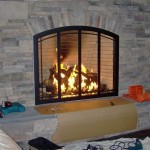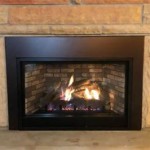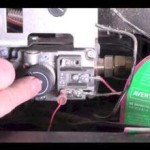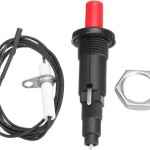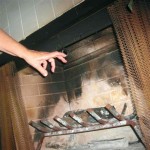How Much Does It Cost To Run An Electric Fireplace Heater?
Electric fireplace heaters have gained popularity as a convenient and aesthetically pleasing way to add supplemental heat to a room. Their ease of installation, variety of styles, and lack of need for venting make them an attractive alternative to traditional fireplaces or space heaters. However, understanding the operational costs associated with running an electric fireplace heater is crucial for making informed decisions about its use and integration into a home's heating strategy.
Determining the cost to run an electric fireplace heater requires a comprehensive understanding of several factors. These factors include the heater's wattage, the local electricity rate, and the duration of use. By carefully analyzing these variables, homeowners can gain a more precise estimate of the operational expenses and optimize their heating strategies to balance comfort and cost-effectiveness.
Understanding the Wattage of Your Electric Fireplace Heater
Wattage is the primary determinant of an electric appliance's energy consumption. An electric fireplace heater's wattage indicates the amount of electricity it needs to operate at its maximum heating capacity. Most electric fireplace heaters range from 750 watts to 1500 watts. Some models might have a lower setting, consuming considerably less electricity when only providing a moderate level of heat or when only showcasing the flame effect without any heating.
The wattage rating is usually printed on a label affixed to the unit, often located on the back or bottom of the fireplace heater. It is also commonly included in the product manual or on the product's online listing. Understanding the specific wattage of the unit is essential for accurately calculating the cost of operation. Assuming an incorrect wattage can result in significant miscalculations and a misunderstanding of the true operational costs.
Some electric fireplace heaters are designed with adjustable heat settings. These settings allow users to control the amount of heat produced and, consequently, the amount of electricity consumed. For example, a heater might have a high setting of 1500 watts and a low setting of 750 watts. Operating the heater on the lower setting, when appropriate, can substantially reduce energy consumption and lower the overall operational costs.
Furthermore, some advanced models feature thermostats that automatically regulate the heating output to maintain a specific room temperature. When the desired temperature is reached, the heater might cycle on and off, reducing the overall energy consumption and preventing overheating. Understanding the thermostat's functionality and how it modulates the heater's output is important for assessing long-term energy costs.
It is crucial to note that some electric fireplaces may also have features like flame-only mode which consumes a minimal amount of electricity. This is because the flame effect is usually created via LED which uses very little power. Knowing if your heater has a flame-only mode and its consumption is useful during the warmer months for creating ambiance without the need to use the heating element.
Calculating Electricity Costs Based on Local Rates
The cost of electricity varies significantly depending on location and the utility provider. Electricity rates are typically measured in cents per kilowatt-hour (kWh). To accurately calculate the cost of running an electric fireplace heater, it is necessary to determine the prevailing electricity rate in your area.
Electricity rates can be found on your monthly electric bill or by contacting your local utility company. Many utility companies also provide this information on their websites. Understanding the rate structure – whether it is a fixed rate, a time-of-use rate, or a tiered rate – is essential for accurately estimating costs. Time-of-use rates charge different amounts based on the time of day, with peak hours often being more expensive. Tiered rates charge progressively higher amounts as electricity consumption increases.
Once the electricity rate is known, the following formula can be used to calculate the cost of running an electric fireplace heater for a specific period:
Cost = (Wattage / 1000) x Hours of Use x Electricity Rate
For example, if an electric fireplace heater has a wattage of 1500 watts, the electricity rate is $0.15 per kWh, and the heater is used for 4 hours per day, the daily cost would be calculated as follows:
Cost = (1500 / 1000) x 4 x 0.15 = $0.90
Therefore, running the 1500-watt electric fireplace heater for 4 hours per day at an electricity rate of $0.15 per kWh would cost $0.90 per day.
It's important to consider that electricity rates can fluctuate seasonally or due to changes in market conditions. Regularly checking and updating the electricity rate used in the calculation ensures the cost estimates remain accurate. Also, different rates may apply depending on the season, with higher rates during peak demand periods like summer or winter.
Some utility companies offer energy efficiency programs or rebates that can help reduce electricity costs. Investigating these programs can lead to significant savings, particularly if combined with efficient heating strategies such as using the electric fireplace heater in conjunction with other heating sources or employing smart thermostats.
Estimating Daily, Monthly, and Seasonal Operational Costs
Beyond calculating the cost per hour or day, it is important to estimate the total operational costs over longer periods, such as a month or a heating season. This broader perspective can help homeowners budget for energy expenses and make informed decisions about their heating needs.
To calculate the monthly cost, simply multiply the daily cost by the number of days in the month. Using the previous example, where the daily cost was $0.90, the monthly cost would be:
Monthly Cost = $0.90 x 30 = $27.00
This calculation provides a rough estimate of the monthly cost, assuming the heater is used for the same number of hours each day. However, in reality, usage patterns often vary depending on factors such as weather conditions, occupancy, and personal preferences. To obtain a more accurate estimate, it is helpful to track the actual usage of the electric fireplace heater over time and adjust the calculations accordingly.
Estimating the seasonal cost requires considering the number of months the heater is likely to be used and the average daily usage during those months. For example, if the heater is primarily used during the four coldest months of the year, and the average daily usage is 4 hours, the seasonal cost can be calculated as follows:
Seasonal Cost = Monthly Cost x Number of Months
Assuming a monthly cost of $27.00, the seasonal cost would be:
Seasonal Cost = $27.00 x 4 = $108.00
This figure provides an estimate of the total cost of running the electric fireplace heater throughout the heating season. It is essential to remember that this is still an estimate, and actual costs may vary depending on factors such as changes in electricity rates, fluctuations in weather conditions, and variations in usage patterns.
To further refine the cost estimates, consider using energy monitoring tools. These tools track the energy consumption of individual appliances and provide detailed insights into usage patterns. This data can be used to identify opportunities for energy savings and optimize heating strategies. Furthermore, some smart thermostats offer advanced features such as remote control and automated scheduling, allowing users to customize heating schedules and minimize energy waste.
In addition to the direct cost of electricity, consider any indirect costs associated with running an electric fireplace heater. For example, supplemental use of an electric fireplace heater might reduce the reliance on a central heating system, potentially lowering overall energy consumption. However, it is also important to factor in any potential impact on the lifespan of the heating unit. While electric fireplace heaters are generally designed for longevity, prolonged or excessive use can contribute to wear and tear.
Lastly, consider the energy efficiency of your home in general. A well-insulated home will retain heat more effectively, reducing the need for supplemental heating from the electric fireplace heater. Addressing factors such as air leaks around windows and doors, insufficient insulation in walls or attics, and inefficient windows can significantly reduce overall energy consumption and lower heating costs.

How Much Does It Cost To Run Electric Fireplace In 2024

ᑕ❶ᑐ How Much Does It Cost To Run An Electric Fireplace

ᑕ❶ᑐ How Much Does It Cost To Run An Electric Fireplace

ᑕ❶ᑐ How Much Does It Cost To Run An Electric Fireplace

Are Electric Fireplaces Expensive To Operate Dimplex

How Much Does An Electric Fireplace Cost 2024 Data

ᑕ❶ᑐ How Much Does It Cost To Run An Electric Fireplace

How Much Electricity Does An Electric Fireplace Use In 2024 R W Flame

ᑕ❶ᑐ How Much Does It Cost To Run An Electric Fireplace

Are Electric Fireplaces Energy Efficient Direct Learning Center
Related Posts

